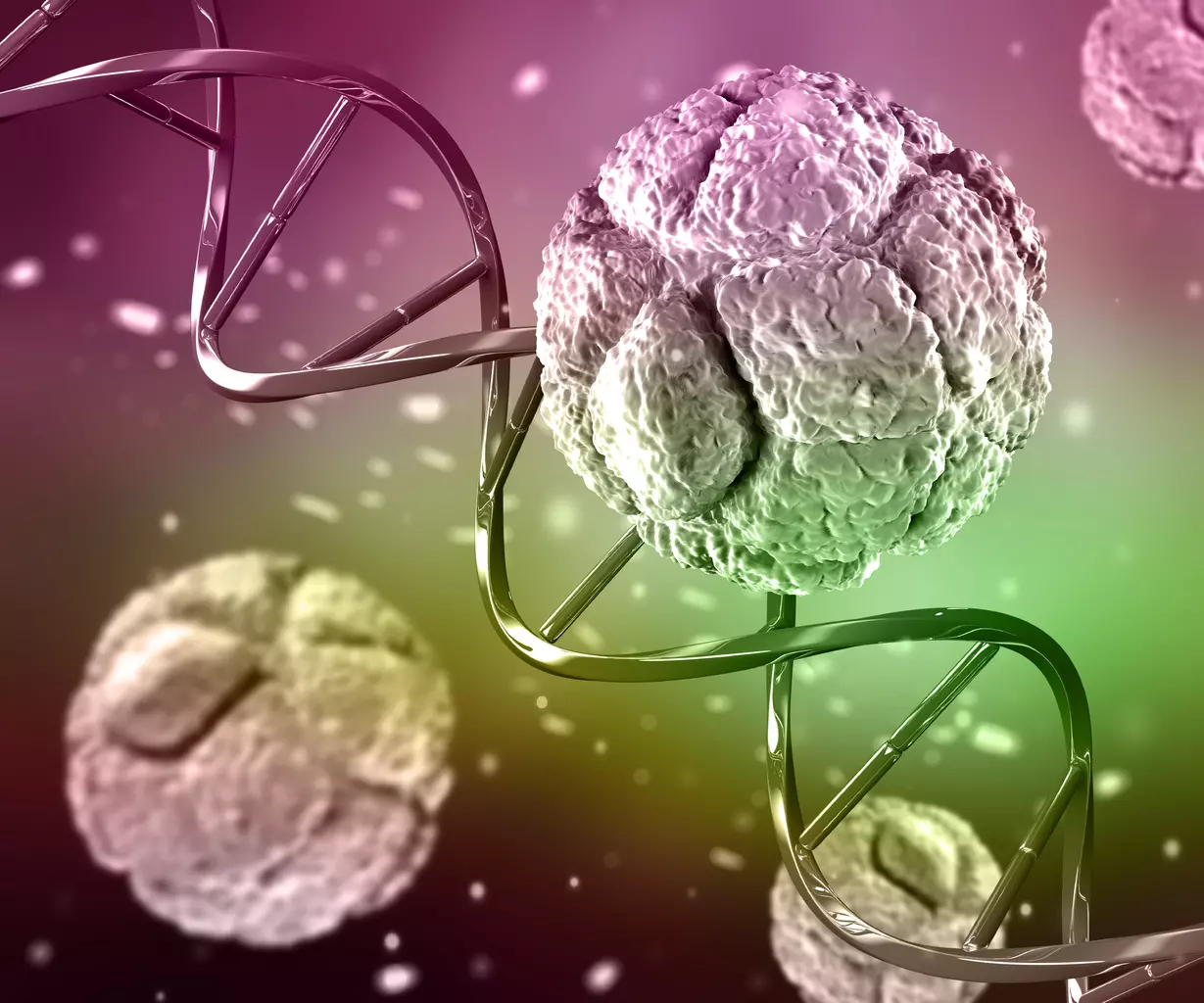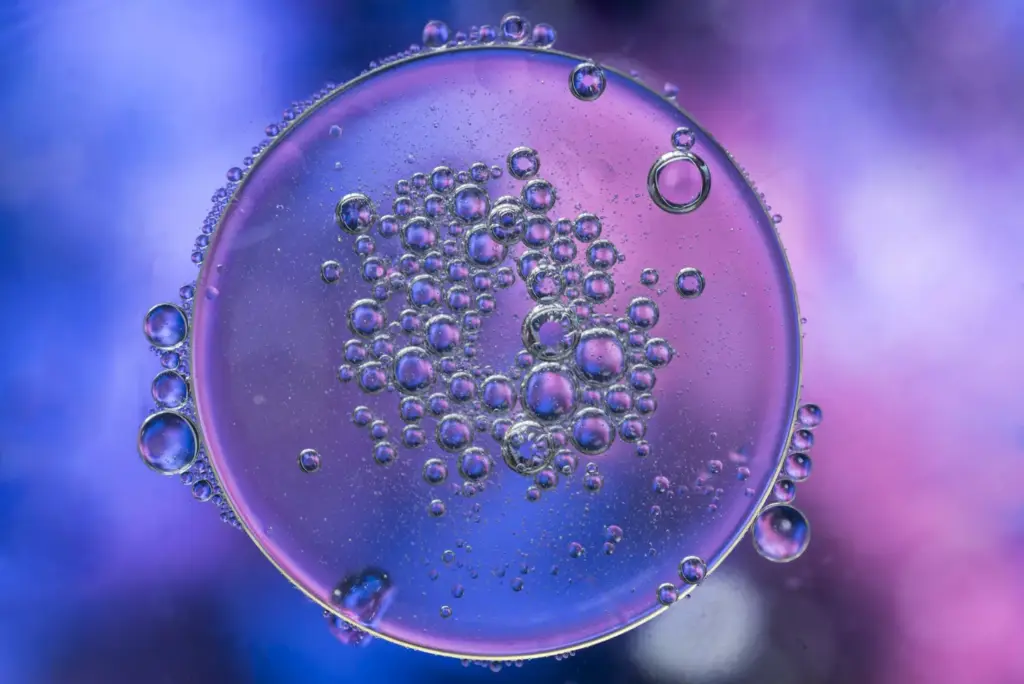
Embryonic stem cells are very promising for changing medicine. They can grow into any tissue. This makes them very important for medical research and new treatments.
Human embryonic stem cells come from embryos. They can grow forever and turn into any cell in the adult body. Studies show they might help with many diseases, like brain and heart problems.
At Liv Hospital, we focus on making discoveries that help patients. We make sure our research leads to safe and effective treatments. This way, we offer top-notch care for those looking for new therapies.

Embryonic stem cells are special cells from the inner cell mass of blastocysts. They can grow and change into many different cell types. This makes them very important in regenerative medicine.
These cells come from the inner cell mass of blastocysts, which are early-stage embryos. They are about 5-7 days old after fertilization. To get ESCs, scientists take the inner cell mass from the blastocyst and grow these cells in a lab.
Research shows that ESCs can turn into all three main types of cells: ectoderm, endoderm, and mesoderm. This is why they are so valuable for studying how cells develop and for possible medical uses.
Human embryonic stem cells (hESCs) have some key traits that make them great for research and medicine. These traits include:
The table below shows some important features of hESCs and why they matter:
| Characteristic | Description | Significance |
|---|---|---|
| Pluripotency | Ability to differentiate into all cell types | Potential for regenerative medicine and tissue repair |
| Self-renewal | Ability to proliferate without differentiating | Allows for large-scale production of hESCs |
| Indefinite culturing | Can be maintained in vitro indefinitely | Provides a consistent source of cells for research and therapy |
Knowing these traits is key to using hESCs in research and medicine.

Pluripotency is key to understanding embryonic stem cells’ role in regenerative medicine. We’ll dive into what pluripotency means and its importance in stem cell research.
Yes, embryonic stem cells are pluripotent. They can turn into almost any cell in the body. This is different from adult stem cells, which can only become a few types of cells.
The science behind pluripotency is complex. It involves genes and pathways that keep ESCs in a state ready to become different cells. Knowing this is key to using ESCs in medicine.
Pluripotency lets ESCs become many cell types, like nerve and muscle cells. This is important for fixing damaged tissues in medicine.
Here’s a table showing some cell types ESCs can become:
| Cell Type | Potential Applications |
|---|---|
| Neurons | Treatment of neurodegenerative diseases, such as Parkinson’s disease |
| Cardiomyocytes | Repair of damaged heart tissue following myocardial infarction |
| Pancreatic Islet Cells | Treatment of diabetes through insulin production |
This table shows ESCs’ wide range of possibilities. It opens doors for treating many diseases. By studying this, researchers can create new treatments.
In conclusion, the pluripotency of embryonic stem cells is very promising. It could lead to new medical treatments. By learning more about pluripotency, we can find new ways to help people with diseases.
In 1998, a major breakthrough happened in stem cell research. The first human embryonic stem cells (hESCs) were isolated. These cells are special because they can turn into any cell in the body.
A team led by Dr. James Thomson at the University of Wisconsin-Madison made this discovery. They took stem cells from the inner part of early-stage embryos. They created a special environment for these cells to grow and stay the same.
Thomson’s team used embryos from couples who were trying to get pregnant through in vitro fertilization. They grew the cells on mouse cells, helping them to thrive. This work was a big step forward in understanding stem cells.
The discovery of hESCs in 1998 changed stem cell research a lot. It helped scientists learn more about how humans develop early on. It also showed how these cells could help fix damaged tissues and treat diseases.
This breakthrough led to more research on embryonic stem cells. Scientists learned more about why these cells can become different types of cells. This knowledge has helped in finding new ways to treat diseases.
Understanding how ESC stem cell lines are developed and maintained is key for regenerative medicine. These cell lines are vital for studying human embryonic stem cells. They also hold promise for new treatments.
ESC cells come from the inner cell mass of human blastocysts. These are embryos at about 5-6 days old. The inner cell mass is where the fetus will form. Getting these cells is a precise and careful process.
To grow human embryonic stem cells (hESCs), scientists use special lab techniques. These cells need specific conditions to stay in a pluripotent state. Researchers use growth factors and culture media to help them grow.
Maintaining the pluripotency of hESCs is key for research and future treatments. Scientists closely watch the cells and adjust their environment as needed.
Worldwide, hundreds of human ESC lines have been made for disease research. There are many human embryonic stem cell lines for scientific study. These lines help us understand human development and disease.
The growth of these cell lines has led to big steps in stem cell research. Scientists keep making new ESC lines with unique traits. This opens up more possibilities for treatments.
It’s important to know the differences between ESC cells and adult stem cells for stem cell research. We’ll look at what makes each unique and how they’re used in research.
ESC cells can turn into almost any cell in the body because of their pluripotency. Adult stem cells, on the other hand, can only turn into certain cell types related to their original tissue.
Pluripotent stem cells are key for studying how we develop and for regenerative medicine. Adult stem cells are great for fixing and keeping tissues healthy, but they can’t change into as many cell types.
The differences between ESC cells and adult stem cells matter a lot for research and treatments. ESC cells are best for studying early human development and for making new cell therapies.
| Characteristics | ESC Cells | Adult Stem Cells |
|---|---|---|
| Differentiation Ability | Pluripotent | Multipotent |
| Cell Types Created | Any cell type | Limited to tissue-specific cell types |
| Research Uses | Developmental biology, regenerative medicine | Tissue repair, maintenance |
The table shows ESC cells can do more in research because of their wide range of differentiation. We’re always learning more about ESC cells and adult stem cells to help us understand human biology better and find new treatments.
Recent breakthroughs in stem cell technology have shown the wide uses of embryo stem cells. These cells can turn into different types of cells. This makes them very useful for treating many health issues.
Embryo stem cells might help treat diseases like Parkinson’s, Alzheimer’s, and spinal cord injuries. They can become neurons, which could replace damaged cells and help restore function.
“The use of embryonic stem cells to generate neurons for the treatment of neurodegenerative diseases is a rapidly advancing field, promising new therapies.”
Research in animal models of these diseases shows promise. It shows embryo stem cells can improve motor and cognitive functions.
| Disease | Potential Treatment | Current Status |
|---|---|---|
| Parkinson’s Disease | Replacement of dopamine-producing neurons | Preclinical trials |
| Alzheimer’s Disease | Regeneration of neural tissue | Early-stage research |
| Spinal Cord Injury | Repair of damaged spinal cord cells | Clinical trials |
Embryo stem cells are also being studied for diabetes research. They could help make pancreatic islet cells that make insulin. This might cure type 1 diabetes by avoiding insulin shots.
Current research aims to turn embryo stem cells into insulin-producing beta cells. This could help control blood sugar levels.
Embryo stem cells might also help repair the heart. They can turn into cardiomyocytes, which could fix damaged heart tissue after a heart attack.
In conclusion, embryo stem cells have a lot of promise for treating many diseases. This includes neurodegenerative diseases, diabetes, and heart conditions. Ongoing research and advancements in stem cell technology are bringing us closer to these treatments.
The ethics of embryonic stem cell research are complex, with many viewpoints and rules. Understanding the embryonic stem cell research definition and its ethics is key to grasping its full impact.
Embryonic stem cell research uses cells from early embryos. These cells can become any cell type, which is very useful for research and treatments. But, using human embryos raises big ethical considerations, like the moral status of embryos and the risk of misuse.
There are different ethical guidelines for this research. For example, the debate between iPSC and ESC shows the ongoing ethical and effective research methods discussion.
Various countries have different rules for embryonic stem cell research. Some ban creating embryos just for research, while others allow it. Knowing these regulatory frameworks is vital for researchers and institutions.
One big challenge in embryonic stem cell research is balancing scientific progress with ethics. The benefits for treatments are huge, but researchers must be careful and respectful of different values.
To find this balance, we need ongoing talks among researchers, ethicists, policymakers, and the public. By understanding the ethical and regulatory issues well, we can support a more informed and careful approach to this research.
Human embryonic cells research is on the verge of a new era. This is thanks to tech advancements and our growing knowledge of pluripotency. We’re finding new ways to use these cells for treatments and improving how we turn research into real-world applications.
Several new technologies are set to boost the use of human embryonic stem cells (ESCs). These include:
These technologies are making ESC-based treatments more efficient, safe, and effective. For example, CRISPR can fix genetic problems in ESCs. This could lead to healthy cells for transplants.
Despite the promise of ESC-based treatments, there are hurdles to overcome for their use in clinics. These include:
To overcome these challenges, we need teamwork between researchers, doctors, and regulators. It’s important to establish strong standards for the quality and safety of ESC-based treatments.
Looking ahead, there are exciting new areas of research. These include using ESCs for:
These new directions show the huge possibilities of human embryonic cells in treating many diseases. As we learn more and improve our skills, we’re getting closer to making ESC research a reality.
Embryonic stem cell (ESC) research is key to advancing regenerative medicine. ESCs can turn into many cell types. This makes them very useful for treating many diseases.
We’ve looked at what makes ESCs special and how they can change the game in treating diseases. As research goes on, we’ll see big steps forward in regenerative medicine. This will bring new hope to people all over the world.
Creating more ESC lines and improving how we grow human ESCs in the lab are big steps. These steps help us understand ESCs better. This knowledge will help us turn this research into real treatments faster.
As we keep moving forward, we must balance science with ethics. We need to make sure ESC research is done right and follows global rules. This way, we can use ESC research to make people’s lives better and healthier.
Embryonic stem cells (ESCs) come from the inner cell mass of a blastocyst. This is an early-stage embryo. They can grow and change into different cell types.
Yes, ESCs can grow into almost any cell type in the body. This makes them very useful for medical research and regenerative medicine.
The 1998 breakthrough was a big step in stem cell research. It let scientists study human development and disease in a lab. It also opened doors for new treatments.
ESC lines are made from the inner cell mass of blastocysts. They are kept in the lab using special media and techniques. These help them keep growing and changing into different cells.
ESCs can grow into almost any cell type. Adult stem cells can grow into cells within a specific group or tissue. This makes ESCs more versatile.
ESCs could help treat many diseases. This includes neurodegenerative disorders, diabetes, and heart conditions. They could provide cells for repair and growth.
ESC research raises questions about using human embryos. It is regulated by laws that vary by country. Researchers must balance scientific progress with ethics.
ESC research is ongoing and exciting. New technologies are improving its uses. There is hope for future breakthroughs in treatments.
Over 1,000 human ESC lines are available worldwide. They offer a wide range of cells for research and possible treatments.
Turning ESC research into treatments is hard. It involves making sure the cells are safe and work well. It also means dealing with concerns about safety and following rules.
Subscribe to our e-newsletter to stay informed about the latest innovations in the world of health and exclusive offers!
WhatsApp us